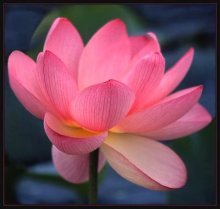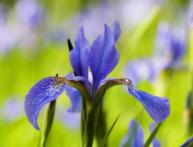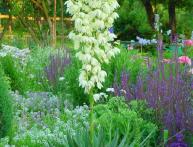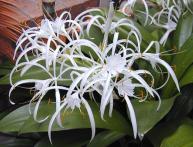Nut-bearing lotus: description, varieties, use, cultivation
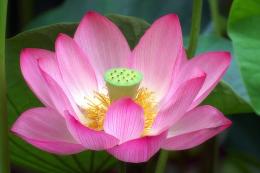
Nut lotus is a perennial aquatic plant that lives in the subtropical climate of India and Southeast Asia. Related species grow in the Far East, in the lower reaches of the Volga and in the Kuban estuaries. The yellow lotus is widespread on the American continent.
Content:
Description of Nut Lotus
One of the largest and most beautiful representatives of coastal flora. Prefers ponds with standing water and rivers with a small current. In favorable conditions, lotus forms extensive thickets. During flowering, huge pink flowers rise to a height of two meters above the water and, against the backdrop of wide, bright green leaves, present an unforgettable sight.
Leaves of two types:
- Floating. They are found on the surface of the water and below the surface. They have a rounded flat shape.
- Airborne. They rise above the surface by 1.5 - 2 m. The shape is funnel-shaped, the leaf diameter reaches 50 - 55 cm. The surface is dense, with a waxy coating. The petioles are strong and flexible. The color of the leaves is rich green.
Semi-double flower, large, on a high peduncle, with a diameter of 25 to 30 cm. The color of different varieties varies from white to bright scarlet. The shape resembles a water lily, but the petals are wider and less pointed.
When the flower fully blooms, the pistil opens, which has a flat shape and size of 5 - 10 cm. Around it are stamens with large yellow anthers. Has a pleasant aroma. At night the flower closes.
One flower produces several large (5 - 15 mm) seeds with a dense shell, which, when the fruit ripens, can protect the plant embryo from drying out and lowering the temperature. Germination remains for decades. The seeds have a pleasant taste.
The rhizome is strong, thickened, growing several meters around the plant. It has a large supply of sugars, proteins, fats, vitamins and microelements. Under unfavorable conditions, it remains alive for a long time. Along the root are embryonic buds that give rise to new plants. When the reservoir freezes and completely dries out, it dies.
Types and varieties of nut-bearing lotus
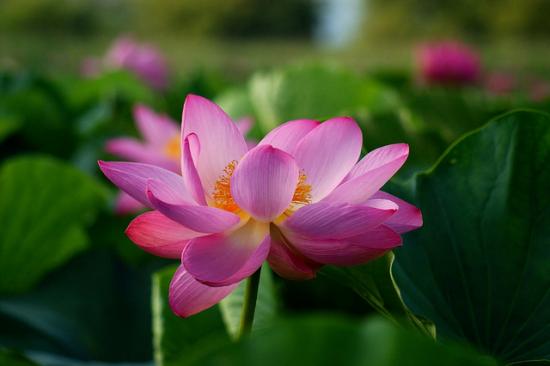
- Caspian lotus. Habitat: Volga delta and Kuban reservoirs. The leaves are large, the flowers are pink. The plant is very similar to the Asian species, but is smaller in size and more adapted to cold weather.
- Lotus Komarova. The most cold-climate resistant type of lotus. Grows in the Primorsky Territory and the Far East of Russia. A plant with large emergent leaves and white-pink flowers. It overwinters well in a thick layer of silt and dies when it freezes.
- American lotus. The only species with yellow flowers. Grows in the tropical zone of America. For a long time, this lotus was grown only in greenhouses. However, propagation by seeds made it possible to successfully grow the flower in the Kuban and in the Botanical Garden of Sochi. Now the species is rapidly gaining popularity.
Use in folk medicine
The peoples of India, China, Vietnam, and Japan have been using all parts of the plant for food and as medicine since ancient times. Flowers, fruits, leaves and roots are used in the form of infusions, decoctions and teas in traditional and folk medicine. They have a tonic, antioxidant, analgesic, and diuretic effect.
Used in medicine to treat:
- bronchial asthma
- pneumonia
- tachycardia
- insomnia
- hepatitis A
- colitis
- diarrhea
Food use:
- Boiled rhizomes are added to salads and soups. The dried ones are used to make marmalade, rich in vitamins, minerals, proteins and carbohydrates.
- The seeds are eaten as a delicacy, fresh or roasted. The ground ones are used to prepare a pleasant drink that replaces coffee.
- The leaves are fed to animals and used as fertilizer, so the population of this plant has declined greatly.
Now the lotus is nut-bearing listed in the Red Book.
Growing a plant
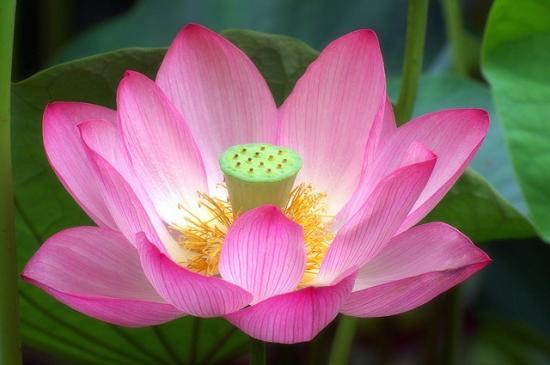
Artificial cultivation lotus began a very long time ago. In Western Europe, to create favorable conditions, special greenhouses with high humidity and constant temperature were built. In places where there is sufficient sunlight, decorative lotus cultivation has been quite successful. In colder climatic zones the plant died.
In the twentieth century, flower breeding again became relevant. They began to plant it in reservoirs of temperate climates, botanical gardens, and in ponds on personal plots.
Growing nut lotus requires several important conditions:
- The presence of a non-freezing reservoir. In central Russia, the pond should be 1.5 - 2 meters deep. The water temperature at this level does not fall below 4 degrees, and the plant will not die.
- A thick layer (at least 50cm) of nutritious soil at the bottom.The lotus needs adequate nutrition and space for the development of powerful roots. The muddy bottom will serve as additional protection against freezing.
- Maximum sunlight. Lotus requires good heating of water and bright sun, as it has a long growing season.
Mature plants, whose roots are below the freezing level, overwinter well. Young seedlings must be lowered deeper or transferred to a frost-free room and will provide a period of dormancy.
Reproduction
Lotus propagates by root layering. Young plants retain all the varietal qualities of the mother plants. They are separated at the beginning of summer and planted in a prepared reservoir directly into the ground or into a container with a nutrient mixture. At a temperature of 22 - 28 degrees, the plant develops quickly and blooms the next year.
Propagation by seeds used for breeding species of lotus and, if necessary, obtaining a large number of specimens. Lotus seeds remain viable for a very long time. The dense shell of the seed is sawed off, placed in a container with water and placed in a sunny place.
Seedlings are grown in shallow water in small containers, gradually moving them to a deeper place. In this case, the leaves should be on the surface. Young lotuses grown from seeds bloom in 3 to 4 years. They become resistant to local climate and diseases.
By crossing the American, Indian and Komarov lotus, it was possible to obtain plants with white, cream, peach, yellow-orange colors. These hybrids tolerate frost well and can be grown in temperate climates.
Admire the beauty of lotus blossoms in the video:
Interesting information about the vegetable garden


